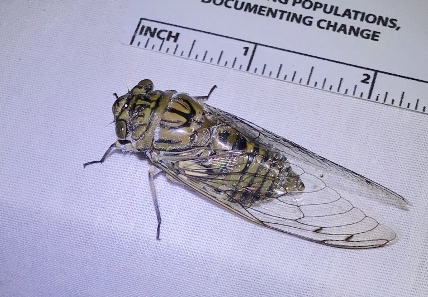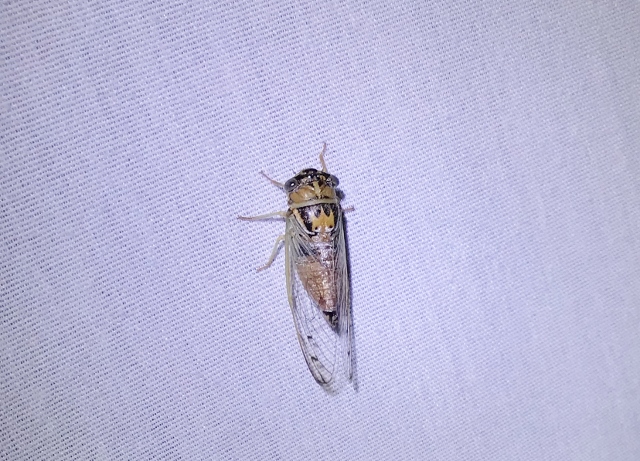Story and photos by Anita Westervelt, Texas Master Naturalist
Last summer brought us the superb dog-day cicada, Neotibicen superbus and its nostalgic, resonating song.
Another Texas songster is filling the night air this summer with decibel-alarming pitch: the giant cicada, Quesada gigas, the widest ranging cicada in the Western Hemisphere — and quite possibly, the loudest insect in Texas.

The giant cicada’s most northern range is the lower half of Texas and beyond, as far south as Argentina.
There are two categories of cicadas, those known as annual, and others called periodical. The giant cicada is an annual cicada, those that typically emerge during the height of summer. The term annual refers to the fact that these cicadas are seen every year; their underground nymph stage is one to two years or more which staggers their annual emergence.
Periodical cicadas, on the other hand, are those that spend 13 or 17 years below ground, depending on the species in nymph stage, and emerge all at once in great masses.
Periodical cicadas are about one and one-half inches long, have reddish colored eyes, black bodies and orange-veined wings. Periodical cicadas are found in the eastern and Midwestern areas of the United States. They just barely touch the northeastern counties of Texas that border Oklahoma, along the Red River.
Annual cicadas vary in size from about three quarters of an inch long, like the Valley’s little mesquite cicada, Pacarina puella, to two-and one-quarter inches long, like the giant cicada.
Eleven species of cicadas have been documented in the Rio Grande Valley. There are 50 some species throughout the state. Annual cicadas generally have green or brownish bodies and green- to bronze-veined wings. The upper body markings are such as to camouflage the cicada to its environment in artful combinations of black, green and brown patterns. Most annual cicadas have brown eyes and brown to green pronotal collar color.
Three distinguishing identifying marks on a cicada’s anatomy are the sectional areas directly behind the eyes beginning with the first segment that is called the pronotum. The second area, a relatively thin lateral strip, is the pronotal collar; the larger, patterned area below the pronotal collar is called the mesonotum. The distinctive pattern and design of the mesonotum is especially helpful in species identification for those interested in putting names to critters.

Giant cicadas can certainly be identified by sound alone — it’s a shrill, near-deafening shriek that has often been likened to mechanical devices that generally come with a warning to wear ear protection! The giant cicada song has been described as ear-piercing sirens, alarms and train whistles.
In nature, that frightful, conversation-cancelling noise is the mating call — belted out only by male cicadas. Each species has its own distinctive song that only attracts females of its own kind, thus allowing several different species to coexist, according to animals.howstuffowrks.com.
Coexisting species currently seen in the Valley include little mesquite cicada and scrub cicada, Diceroprocta delicate. Cicadas can be drawn to moth set-ups. See South Texas Border Chapter, Texas Master Naturalist’s mothing blog: https://www.stbctmn.org/post/mothing

